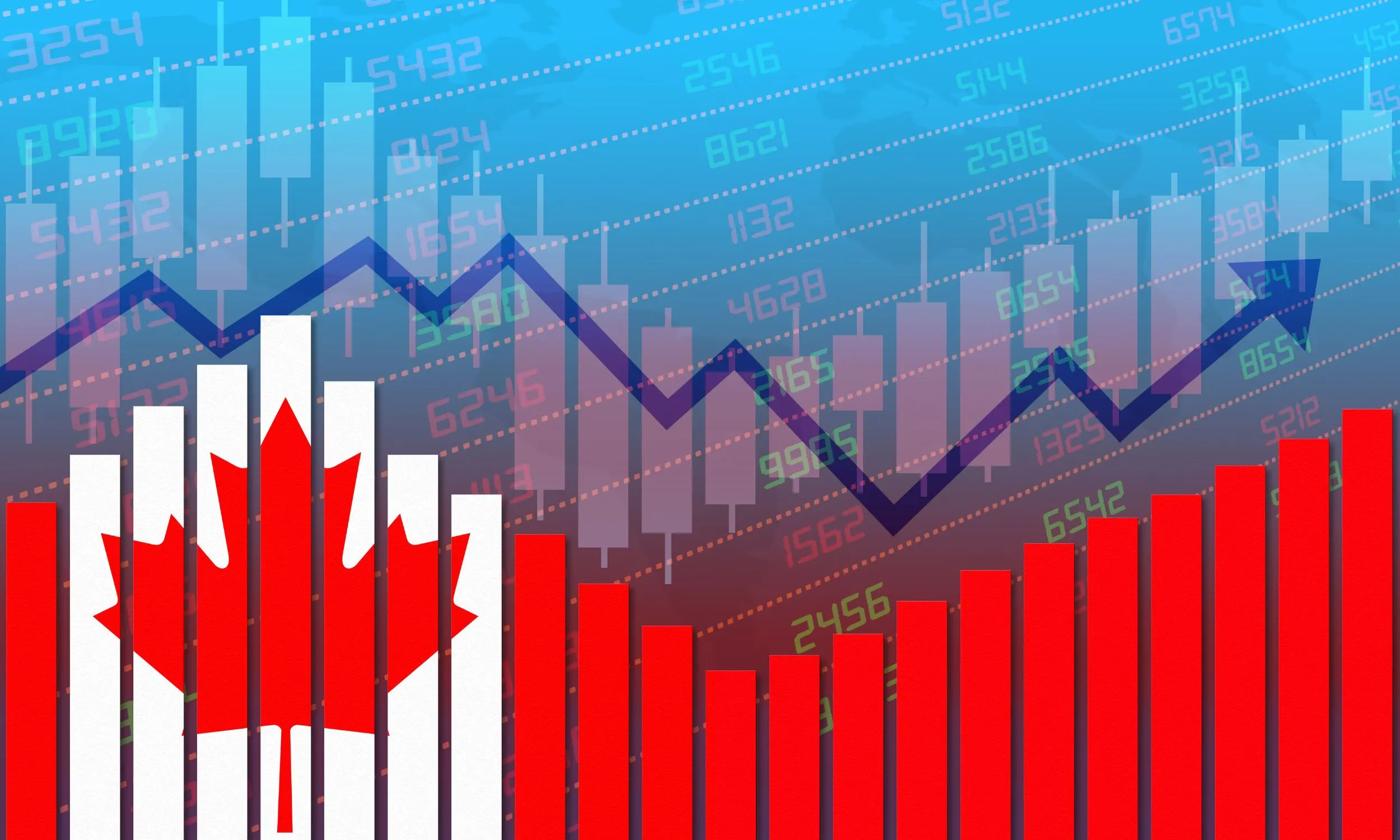Investing in ETFs in Canada: A Step-by-Step Guide for Beginners

Investing in ETFs in Canada offers a straightforward, cost-effective way to build wealth, especially for those just starting their financial journey.
Exchange-traded funds (ETFs) have surged in popularity among Canadian investors, blending the diversification of mutual funds with the flexibility of stocks.
For beginners, navigating the world of ETFs can feel like stepping into a bustling marketplace—exciting but a bit overwhelming.
Why should you consider ETFs over other investment options?
This guide breaks down the process into clear, actionable steps, weaving in fresh insights, practical examples, and strategies to help you confidently start investing.
With Canada’s ETF market booming—reaching over $400 billion in assets by 2024—this is the perfect time to dive in.
Why ETFs Are a Beginner’s Best Friend
Picture ETFs as a diversified picnic basket: one purchase gives you a taste of many ingredients—stocks, bonds, or even commodities—without needing to pick each one individually.
This is the magic of ETFs.
They track indices like the S&P/TSX Composite or S&P 500, offering instant diversification that reduces risk compared to betting on a single stock.
For beginners, this means less stress about picking the “right” company and more focus on long-term growth.
Plus, ETFs typically boast lower fees than mutual funds, with management expense ratios (MERs) often between 0.05% and 0.5%, compared to mutual funds’ 2% or more.
This cost efficiency can significantly boost returns over time.
Consider Sarah, a 28-year-old teacher in Vancouver.
She wants to save for a home down payment but knows little about investing.
By choosing a broad-market ETF like the Vanguard FTSE Canada All Cap Index ETF (VCN), she gains exposure to hundreds of Canadian companies with just one purchase.
Her $5,000 investment spreads across sectors like banking, energy, and tech, cushioning her against the volatility of any single stock.
This simplicity and safety net make ETFs ideal for newcomers.
Furthermore, ETFs provide an excellent entry point for those unfamiliar with the stock market, allowing them to learn while investing.
As they watch their investments grow, beginners can gain confidence and knowledge about the financial markets.
Step 1: Define Your Financial Goals and Risk Tolerance
Before diving into investing in ETFs in Canada, clarify what you’re aiming for.
Are you saving for retirement, a dream vacation, or your child’s education?
Your goals shape your investment choices.
A 2024 Bank of America survey noted that 43% of ETF inflows went to bond ETFs, reflecting a shift toward stability amid economic uncertainty.
If you’re risk-averse, like Sarah, you might lean toward bond or balanced ETFs.
If you’re younger and comfortable with market swings, equity ETFs could align better with your long-term vision.
Risk tolerance varies.
A 25-year-old might allocate 80% to equity ETFs and 20% to bonds, while a 50-year-old nearing retirement might flip that ratio for stability.
Ask yourself: How would I feel if my portfolio dropped 20% in a year?
Your answer guides your asset allocation.
Tools like robo-advisors, such as Wealthsimple, can assess your risk profile and suggest ETF portfolios tailored to your needs.
Table 1: Sample ETF Portfolio Allocations by Risk Profile
| Risk Profile | Equity ETFs (%) | Bond ETFs (%) | Other (e.g., Commodities) (%) |
|---|---|---|---|
| Conservative | 30 | 60 | 10 |
| Moderate | 60 | 35 | 5 |
| Aggressive | 80 | 15 | 5 |
Additionally, understanding your financial goals can help you stay focused and avoid emotional decision-making during market fluctuations.
Setting specific, measurable goals can also guide your investment strategy and keep you motivated.
+ RRSP vs. TFSA: Which Is the Best Choice for Your Money in 2025?
Step 2: Choose the Right Brokerage Platform
To start investing in ETFs in Canada, you’ll need a brokerage account.
Think of it as your gateway to the stock market.
Options range from traditional banks like TD Direct Investing to low-cost platforms like Questrade, which offers commission-free ETF purchases.
For beginners, platforms with user-friendly interfaces and educational resources are key.
Wealthsimple Trade, for instance, allows fractional ETF purchases, letting you invest small amounts without needing to buy whole shares.
When selecting a broker, compare fees, account types (like TFSAs or RRSPs), and tools.
Questrade’s Instant Deposit feature lets you transfer up to $3,500 instantly, ideal for eager beginners.
If you prefer hands-off investing, robo-advisors automatically build and rebalance ETF portfolios based on your goals.
For example, John, a 35-year-old engineer in Toronto, uses Wealthsimple’s robo-advisor to invest $200 monthly in a balanced ETF portfolio.
The platform handles diversification and rebalancing, saving him time.
Moreover, researching various brokerage options can lead to better investment opportunities and lower costs.
Reading reviews and comparing features can help you find the platform that best suits your needs.

Step 3: Research and Select Your ETFs
Not all ETFs are created equal.
Some track broad indices, while others focus on specific sectors like technology or green energy.
Beginners should prioritize low-cost, diversified ETFs.
The iShares Core S&P/TSX Capped Composite Index ETF (XIC), for instance, covers the Canadian market broadly, while the BMO MSCI All Country World ex Canada Index ETF (ZEA) offers global exposure.
Check the ETF’s prospectus for details on holdings, fees, and risks.
The Canadian Securities Administrators mandate that ETF Facts documents be provided within two days of purchase, summarizing key information like past performance and MERs.
Focus on ETFs with low MERs and strong liquidity—those with high trading volumes ensure you can buy or sell without price distortions.
Thematic ETFs, like those targeting AI or clean energy, can add spice to your portfolio but carry higher risks.
Balance these with core holdings to avoid overexposure.
Table 2: Top Canadian ETFs for Beginners (2025)
| ETF Ticker | Name | MER (%) | Focus | Annualized 5-Year Return (%) |
|---|---|---|---|---|
| VCN | Vanguard FTSE Canada All Cap | 0.05 | Canadian Equities | 8.2 |
| XIC | iShares Core S&P/TSX Capped | 0.06 | Canadian Equities | 8.5 |
| VFV | Vanguard S&P 500 Index ETF | 0.08 | U.S. Equities | 14.1 |
| ZAG | BMO Aggregate Bond Index ETF | 0.09 | Canadian Bonds | 2.3 |
| ZEA | BMO MSCI All Country World ex Canada | 0.22 | Global Equities (ex Canada) | 10.4 |
Additionally, staying informed about market trends and economic conditions can help you make better investment decisions.
Following financial news and analysis can provide insights into which sectors or ETFs might perform well in the future.
Step 4: Open and Fund Your Account
Once you’ve chosen a brokerage, open an account—typically online in minutes.
Decide whether to use a registered account like a Tax-Free Savings Account (TFSA) or Registered Retirement Savings Plan (RRSP) for tax advantages.
TFSAs are ideal for short- to medium-term goals, as withdrawals are tax-free.
RRSPs suit long-term retirement planning, reducing taxable income.
In 2025, the TFSA contribution limit is $7,000, perfect for small-scale investors.
Fund your account via bank transfer or by linking an existing account.
Start small if needed—ETFs have no minimum investment beyond one share’s price.
Sarah, for example, funds her TFSA with $500 monthly, buying fractional shares of VCN to build her portfolio gradually.
Moreover, automating your contributions can help you stay disciplined and consistently invest without having to think about it.
Setting up automatic transfers can simplify the process and ensure you stay on track with your financial goals.

Step 5: Place Your First ETF Trade
Trading ETFs is as simple as buying stocks.
Log into your brokerage, search for the ETF’s ticker (e.g., VFV for Vanguard’s S&P 500 ETF), and place a market or limit order.
Market orders execute instantly at the current price, while limit orders let you set a price cap for better control.
For beginners, market orders are often sufficient.
Double-check the ETF’s trading volume to avoid price volatility in thinly traded funds.
John’s first trade was 10 shares of XIC at $40 each, costing $400 plus a small commission.
He set up automatic monthly purchases to stay consistent, leveraging dollar-cost averaging to smooth out market fluctuations.
Additionally, keeping a trading journal can help you track your decisions and learn from your experiences.
Reviewing your trades can provide insights into your investing style and help you improve over time.
++ Finances in Focus: Bank of Canada Holds Interest Rate Steady Amid Economic Uncertainty
Step 6: Monitor and Rebalance Your Portfolio
Investing in ETFs in Canada isn’t a set-it-and-forget-it strategy.
Markets shift, and so should your portfolio.
Rebalancing ensures your asset allocation aligns with your goals.
For instance, if equities outperform bonds, your portfolio might become riskier than intended.
Check your holdings quarterly and adjust as needed.
All-in-one ETFs, like Vanguard’s Balanced ETF Portfolio (VBAL), automatically rebalance, making them a hassle-free choice for beginners.
Economic conditions also matter.
In 2024, rising interest rates boosted bond ETF popularity, as investors sought stability.
Stay informed via trusted sources like MoneySense or the Canadian Couch Potato blog, which offer ETF insights tailored to Canadians.
Moreover, utilizing portfolio tracking apps can simplify the monitoring process.
These tools provide real-time updates and performance metrics, helping you stay informed about your investments.
Common Pitfalls and How to Avoid Them
New investors often stumble by chasing trendy ETFs or overtrading.
Thematic ETFs, like those tied to cryptocurrencies, can be tempting but volatile.
Stick to diversified, low-cost funds for your core portfolio.
Another mistake is ignoring fees—high MERs or frequent trading commissions can erode returns.
Opt for commission-free platforms like Wealthsimple Trade or Questrade for ETF purchases.
Emotional investing is another trap.
Market dips can spark panic, but ETFs are built for the long haul.
Historically, the S&P/TSX Composite Index has delivered 7-10% annual returns before inflation over decades.
Patience pays off.
Additionally, educating yourself about market cycles and historical performance can help you remain calm during downturns.
Understanding that volatility is a natural part of investing can foster a long-term mindset.
The Power of Starting Early
Time is your greatest asset when investing in ETFs in Canada.
A $10,000 investment in an ETF like VFV, tracking the S&P 500, could grow to over $40,000 in 20 years at a 7% annual return, thanks to compounding.
Start small, stay consistent, and let the market work its magic.
Even $100 monthly can build a substantial nest egg over time.
Moreover, teaching younger generations about investing can create a culture of financial literacy and responsibility.
Encouraging children or teenagers to start investing early can set them up for a more secure financial future.
For more insights on investing and personal finance, you can visit Investopedia.
Wrapping Up: Your Path to Wealth Creation
Investing in ETFs in Canada is like planting a tree—you nurture it early, and it grows steadily over time.
By defining your goals, choosing a reliable brokerage, selecting diversified ETFs, and staying disciplined, you can build a robust portfolio with minimal stress.
Avoid chasing fads, keep fees low, and let compounding do the heavy lifting.
Whether you’re like Sarah, saving for a home, or John, planning for retirement, ETFs offer a flexible, beginner-friendly path to financial growth.
Ready to take your first step?
The Canadian ETF market is waiting.
Staying informed and educated is key to successful investing.
